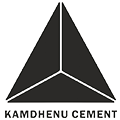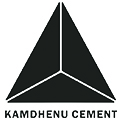The ready-mix concrete industry was one of the first concrete industries established in the USA. In less time, RMC became the first choice for engineers across the globe. Ready-mix concrete plants play a vital role in the world of construction and development, especially when it comes to residential and commercial construction projects. This article presents some key figures on the present and future of this industry, along with the benefits of its growth over time.
What is ready-mix concrete?
Ready-mix concrete is the production of cement, gravel, sand, water, and other additives to produce a mortar of concrete. When these components are mixed together in the right proportions, they form a solid material that is ideal for creating strong foundations. Some examples include parking garages and even buildings. Ready-mix concrete has been around since the 19th century but didn’t come into general use until after World War II, when people wanted to rebuild their countries. The process of mixing it up to create this material was much more time-consuming than it is today because there were fewer power tools available at the time for doing so, but with modern equipment, everything moves much faster today.The history of ready-mix concrete
India’s history with ready-mix concrete stretches back to the 1950s. However, it wasn’t until the late 1960s that the industry saw growth, thanks to a government scheme created by former Prime Minister Indira Gandhi that aimed to construct nearly 350 new bridges in only two years. Because of this increase in demand, demand for ready-mix concrete continued to rise. In 1965, public authorities were granted permission for the first time to issue construction permits for buildings without an Indian building contractor present on site. The following year, in 1966, Parliament passed the Public Works Contract Act, which expanded contractors’ rights. The law also required state governments to give contractors advance notice of upcoming projects, thus allowing them to compete for these projects as well as bid competitively. However, this led to price fixing amongst contractors, and soon after, there was an inquiry into corruption among politicians and officials at local levels in order to get contracts awarded.Commercialization timeline
In India, Ready-mix Concrete Industry is set to grow at a CAGR of around 5.8% from 2017 – 2023. The segment can be sub-segmented into ready mix concrete and other products. India is among the key players in this industry, with its share at 35%. This growth can be attributed to factors such as an increase in per capita income, a growing residential sector, availability of finance and high investments in the construction sector. Furthermore, there is immense scope for expansion due to low penetration levels as compared to developed nations.Benefits of ready-mix concrete
The perks of using ready-mix concrete are:- Speed to market is another advantage of ready-mix concrete. Unlike traditional masonry, concrete has little or no wait time for curing.
- It reduces downtime during construction periods, saving valuable company resources.
- There is a lesser chance of mistakes when using ready mix concrete in comparison to traditional masonry since it is easier to read the proportions required for a good mix.
- In terms of environmental responsibility, using this product instead of regular mortar can help significantly reduce air pollution.
- The ready mix usually features a protective cover that seals out the most harmful emissions during production and delivery.


